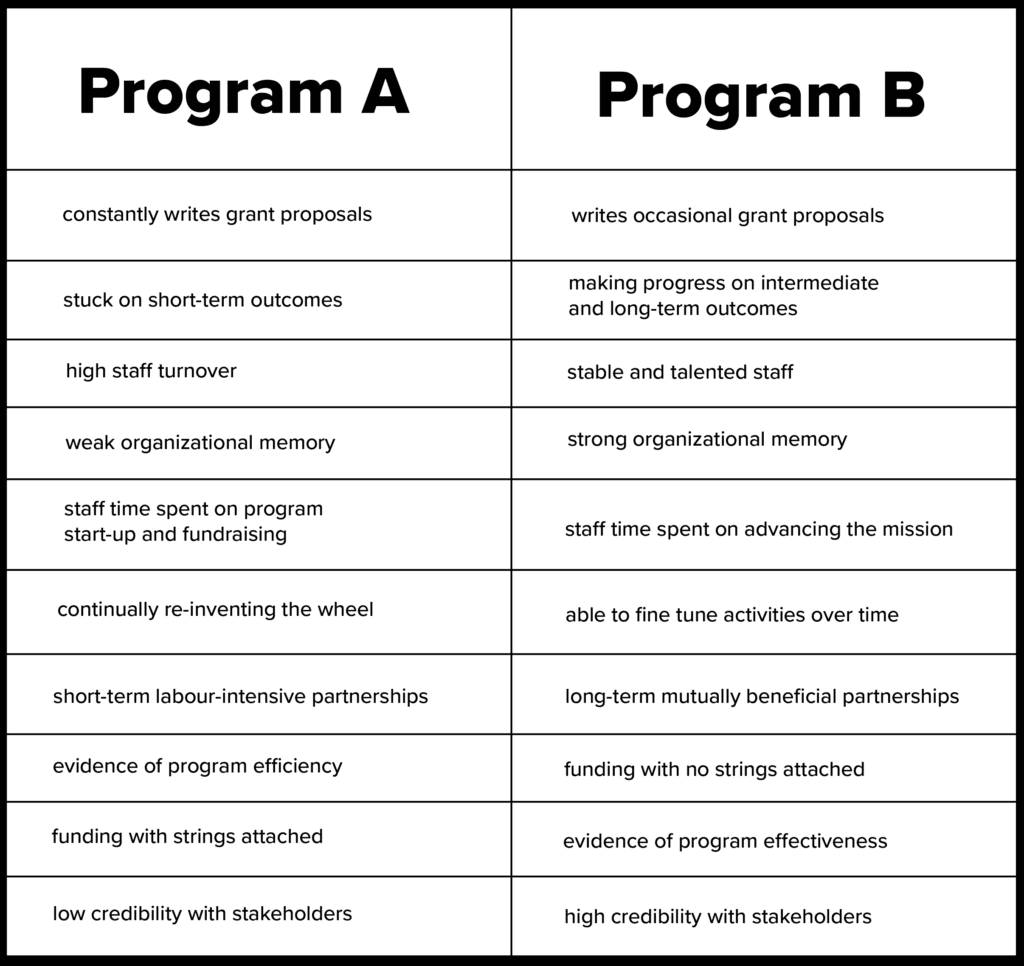“What are your plans for sustaining this project, if you are successful?”
Many of you will recognize this question from grant applications, and unfortunately, it’s one that we often struggle to answer confidently. For years, I used to wing my answer, saying something I thought the funder wanted to hear. Then one day I had the opportunity to research what factors are actually associated with greater program sustainability, and my world changed.
What I learned truly surprised me, because when I summarized this research, it turned out achieving sustainability wasn’t rocket science. In fact, the promoters of program sustainability read like many best practices for operating a non-profit: diversified funding, program champions, evaluation and performance measurement, and collaborative partners.
But there are other promoters that you might not immediately think about, such as a strong volunteer base, in-kind resources, high visibility, local values and culture, and a sustainability plan. Although researchers are still learning about the conditions under which new program innovations are sustained, I’m excited by the potential of what we can achieve with what we currently understand now.
Why Should We Care About Program Sustainability?
More than ever, program sustainability is a concern for nonprofits and the grantmaking organizations that fund them. It’s been estimated that up to 40% of all new social programs do not last long beyond their initial funding.[1] Compare the two programs below. Program A struggles continually with sustainability, while Program B has a better handle on it. Which one would you rather be?

A Sustainability Plan
Here’s the thing. We now know that program sustainability is not just about funding. Sure, it’s important, but it’s really the product of a proactive and step-by-step process. I’ve always found it curious that while many organizations diligently develop strategic plans, few take the time to craft a sustainability plan. A sustainability plan is a conscious response to the fearful dilemma of what to do if you lose a major funding stream. And let me tell you, at some point, most of you will lose a major funding stream.
An ideal sustainability plan is one that you develop at the beginning of your program, includes multiple strategies, and becomes a part of your organization’s overall strategic plan. But if your program is already out of the gate, it’s never too late to draft one. Just don’t leave it until three months before your seed funding ends. Building capacity to sustain your program will take time and effort, so the sooner you start, the better. Best of all, unlike some planning processes, you can complete your sustainability planning relatively quickly. Most groups can do it in a day or less.
So what are you waiting for? Take charge of your sustainability today and watch your programs not only survive, but thrive!
_________________________
Kylie Hutchinson is principal consultant with Community Solutions Planning & Evaluation and the author of Survive and Thrive: Three Steps to Securing Your Program’s Sustainability.
[1] Savaya, R., Spiro, S., & and Elran-Barak, R. (2008). Sustainability of social programs: A comparative case study analysis. American Journal of Evaluation, 29, 478-493.






